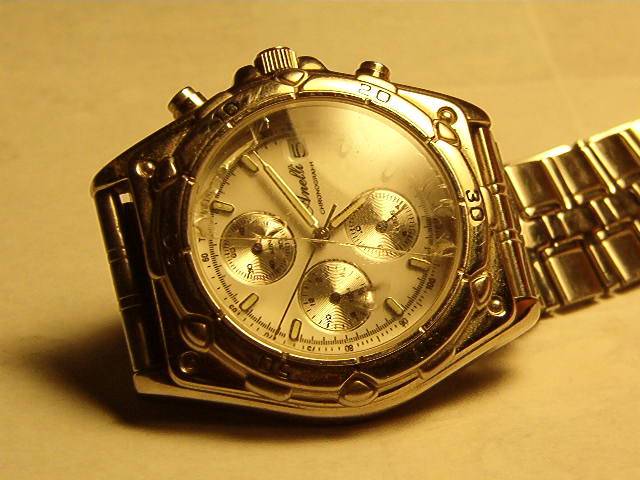History of Automatic Watches
After many years of perfecting the art of watch making, inventors from all around the world set their sights on creating new mechanical designs that enabled their clocks to wind by themselves, enabling users to use hand watches without the fear of missing their daily routine of providing power to their time measuring machines. The first efforts in this field came from 1770s, and after that production of automatic watches spread around the world.
All mechanical watches are powered by the energy of mainspring, which moves gears that move hands. Because of the loss of energy of mainspring over time, users had to continuously wound it up by turning small knob on its case. Self-winging (or automatic) watch have mechanisms that uses eccentric weights configured around pivot, that spin while the users hand is moving. This spinning of the weights created circular motion of rotor (which is connected to series of gears and reversers until final connection to the mainspring) represent the basic look of every automatic watch on the market. However, first examples of this technology had several disadvantages that were overcome over the last 300 years of modern engineering. For example ways of preventing over winding of the mainspring.

History of automatic watches started in 1770s with the designs of Swiss watchmaker Abraham-Louis Perrelet. He devised mechanical device which could by his calculation transfer energy created by the movement of user’s body into enough power to power automatic clock for eight days. However, much more publicized design of automated watch came from French inventor Hubert Sarton who published his designs in 1778 and managed to showcase to historians that Perrelet’s watches were inspired by his work. In 1780, French public had the opportunity to buy automatic pocket watches from clockmaker named Abraham-Louis Breguet who purchased designs from Perrelet and made several improvements. However, he stopped selling them in 1800 after public realized that his watches were not reliable.
True revolution in automatic watch industry came after World War I when advanced in manufacture finally enabled production of small wrist watches with automatic winding. Because movement of the hands provided much more kinetic power than with pocket watches, engineers finally had the opportunity to more easily transform that power into changing mechanisms. First man who managed to do that was John Harwood, watch repairer from Bolton, England. After he claimed patents English and Swiss for automated wristwatch ion 1923, Hardwood started producing watches in his factory in Swizerland in 1928 giving the European public chance to use watches which had the capacity for 12 hour work after they were fully charged.
Others manufacturers soon embraced designs of John Harwood and started and era of improvement. Famous watch company Rolex added a new system of weights which could move more freely and capture much more energy with every turn (up to 35 hours of work when fully charged). In 1948 Eterna Watch introduced ball bearings to the automatic watch designs, enabling much better control over internal components and ability to preserve structural integrity of the watch even when external forces reached critical levels (for example when the watch was dropped on the ground).
Currently, majority of wristwatches in the world is using automatic winding, with only small percent still holding on to manually wound designs. Some automatic watches embraced digital era, with weighted rotors turning inside small electrical generators that store their power into on board rechargeable battery.
